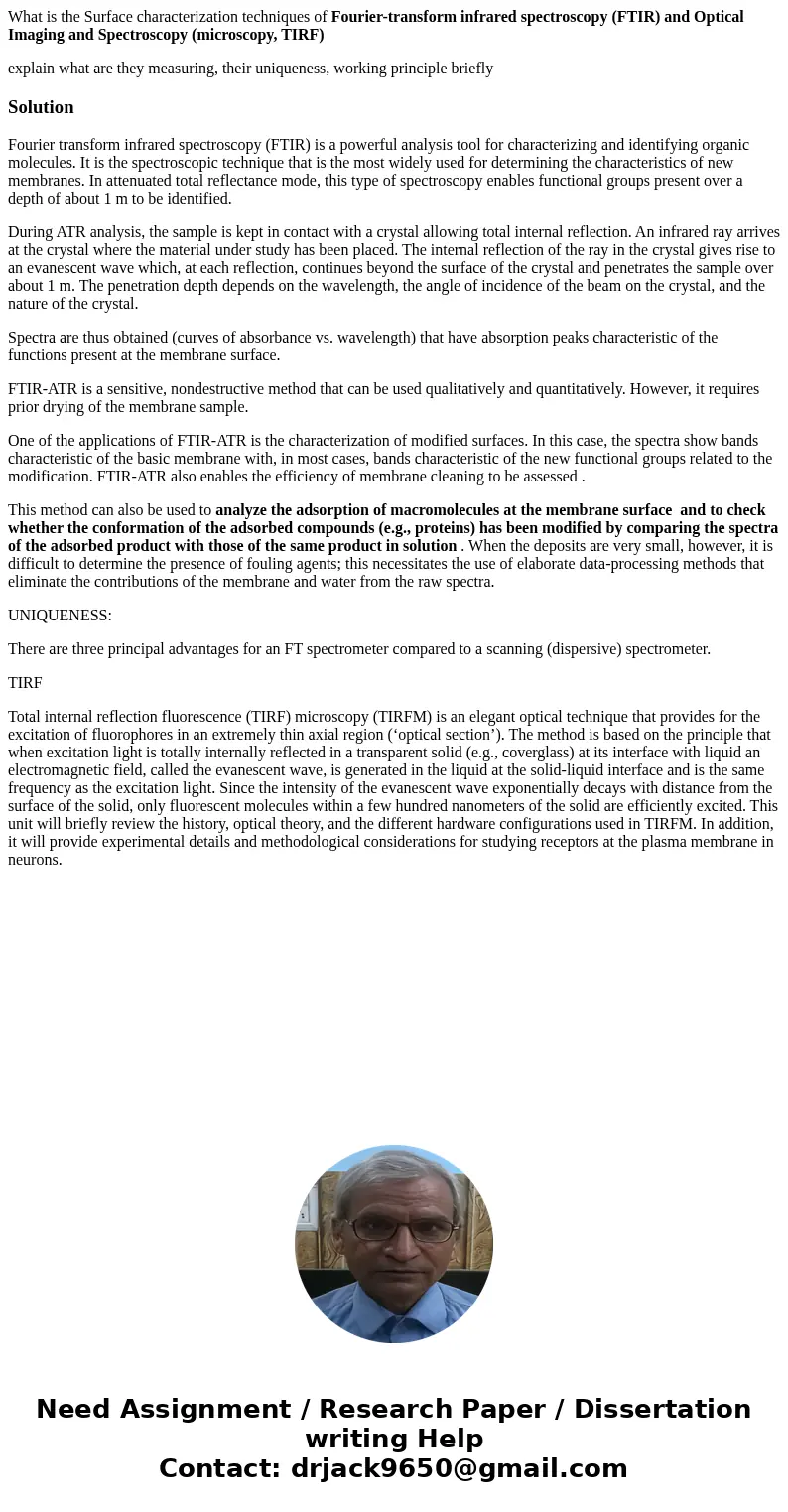What is the Surface characterization techniques of Fouriertr
What is the Surface characterization techniques of Fourier-transform infrared spectroscopy (FTIR) and Optical Imaging and Spectroscopy (microscopy, TIRF)
explain what are they measuring, their uniqueness, working principle briefly
Solution
Fourier transform infrared spectroscopy (FTIR) is a powerful analysis tool for characterizing and identifying organic molecules. It is the spectroscopic technique that is the most widely used for determining the characteristics of new membranes. In attenuated total reflectance mode, this type of spectroscopy enables functional groups present over a depth of about 1 m to be identified.
During ATR analysis, the sample is kept in contact with a crystal allowing total internal reflection. An infrared ray arrives at the crystal where the material under study has been placed. The internal reflection of the ray in the crystal gives rise to an evanescent wave which, at each reflection, continues beyond the surface of the crystal and penetrates the sample over about 1 m. The penetration depth depends on the wavelength, the angle of incidence of the beam on the crystal, and the nature of the crystal.
Spectra are thus obtained (curves of absorbance vs. wavelength) that have absorption peaks characteristic of the functions present at the membrane surface.
FTIR-ATR is a sensitive, nondestructive method that can be used qualitatively and quantitatively. However, it requires prior drying of the membrane sample.
One of the applications of FTIR-ATR is the characterization of modified surfaces. In this case, the spectra show bands characteristic of the basic membrane with, in most cases, bands characteristic of the new functional groups related to the modification. FTIR-ATR also enables the efficiency of membrane cleaning to be assessed .
This method can also be used to analyze the adsorption of macromolecules at the membrane surface and to check whether the conformation of the adsorbed compounds (e.g., proteins) has been modified by comparing the spectra of the adsorbed product with those of the same product in solution . When the deposits are very small, however, it is difficult to determine the presence of fouling agents; this necessitates the use of elaborate data-processing methods that eliminate the contributions of the membrane and water from the raw spectra.
UNIQUENESS:
There are three principal advantages for an FT spectrometer compared to a scanning (dispersive) spectrometer.
TIRF
Total internal reflection fluorescence (TIRF) microscopy (TIRFM) is an elegant optical technique that provides for the excitation of fluorophores in an extremely thin axial region (‘optical section’). The method is based on the principle that when excitation light is totally internally reflected in a transparent solid (e.g., coverglass) at its interface with liquid an electromagnetic field, called the evanescent wave, is generated in the liquid at the solid-liquid interface and is the same frequency as the excitation light. Since the intensity of the evanescent wave exponentially decays with distance from the surface of the solid, only fluorescent molecules within a few hundred nanometers of the solid are efficiently excited. This unit will briefly review the history, optical theory, and the different hardware configurations used in TIRFM. In addition, it will provide experimental details and methodological considerations for studying receptors at the plasma membrane in neurons.

 Homework Sourse
Homework Sourse